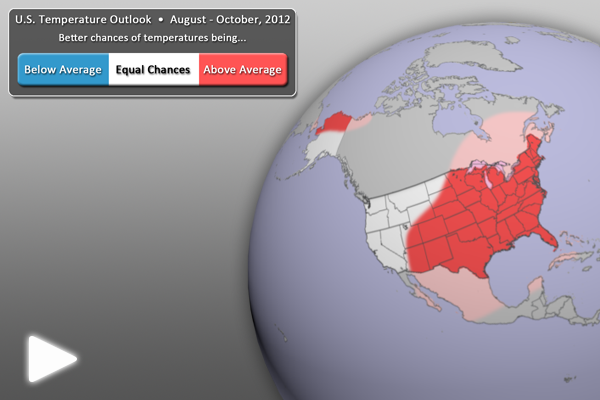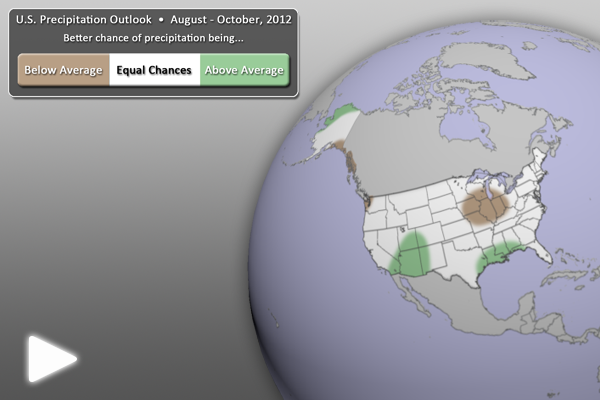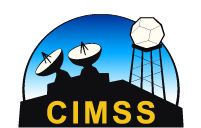Much of the United States is expected to be warmer as we close out summer and head into autumn. Some drought relief may also be on the way for parts of the southeast and desert southwest. Read on for more information.

U.S. Temperature Outlook (August-October 2012) • Click Image for Full-Earth animation • Click Here to open in YouTube
- Sea Surface Temperatures in the ENSO (El Niño Southern Oscillation) region suggest continued neutral conditions, but may be giving way to an El Niño by the end of the summer or early fall, according to the Climate Prediction Center.
- For the August – October period, warmer than normal temperatures are expected across much of the eastern two-thirds of the United States, as well as northern Alaska. Low soil moisture amounts across much of the country also continue to keep much of the country warmer than normal.
- All other locations (in white) have equal chances of being warmer or cooler than normal.
- Outlook by NOAA’s Climate Prediction Center (CPC)
- In its forecasts, the CPC uses a wide variety of models in conjunction with looking at climate variables (like El Niño).
- It should be noted that areas in the “warmer than normal” region may still have cooler than normal days. This outlook only suggests that after the three months are over, those areas in the “warmer than normal” region are more likely to have experienced warmer than normal average temperatures.

U.S. Precipitation Outlook (August-October 2012) • Click Image for Full-Earth animation • Click Here to open in YouTube
- For the next three months (August – October), drier than normal conditions are expected for coastal Washington state, as well as the southeastern coastlines of Alaska. The mid-Mississippi River Valley can also expect continued below average precipitation, further exacerbating existing drought conditions.
- Wetter than normal conditions are expected in the extreme southern portions of the desert southwest, likely due to increased monsoonal moisture. The southeast U.S. is also expected to be wetter than normal, due in part to warm waters in the Gulf of Mexico.
- All other locations (in white) have equal chances of being wetter or drier than normal.
- Outlook by NOAA’s Climate Prediction Center (CPC)
- In its forecasts, the CPC uses a wide variety of models in conjunction with looking at climate variables (like El Niño).
- It should be noted that areas be in the “drier than normal” region may still have rainy days. This outlook only suggests that after the three months are over, those areas in the “drier than normal” region are more likely to have experienced drier than normal averages.
Where do I find the datasets?
- First, check your SOS system to make sure they are not already in the EarthNow category. There is also an earthnow.sos playlist file that includes a playlist with all of these datasets.
- If not, you can download the datasets and playlist files from this FTP Site.
Helpful Resources for More Information
- http://www.cpc.ncep.noaa.gov/products/predictions/90day/fxus05.html NOAA CPC Outlook Discussion
- http://www.ncdc.noaa.gov/sotc/briefings NOAA Climate Report Briefings






